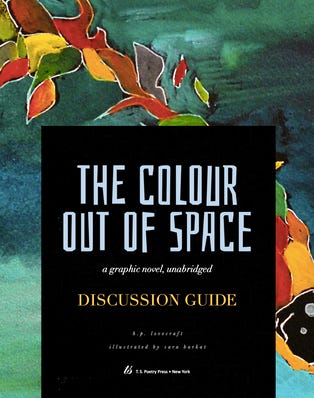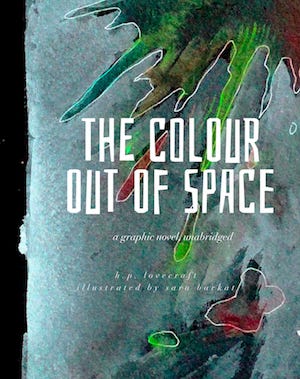Review by Glynn Young, reprinted from Tweetspeak Poetry.
______
I’m a words guy. I’ve always been a words guy. Yep, I collected comic books, including Classics Illustrated, and I was an avid fan of Mad Magazine, the operating manual for adolescent boys from the 1950s to the 1970s. And, of course, there was television and movies. But still, I was a words guy – all through high school, studying journalism in college, and making a general career of words.
The arrival of audiobooks and graphic novels barely made a dent in my consciousness. Their fans are legion, but I was never among them, although I do enjoy my Kindle e-books (more words). But two things happening almost simultaneously pitched me headfirst into graphic novels. First, a friend recommended a new book on the friendship of C.S. Lewis and J.R.R. Tolkien called The Mythmakers. I ordered it because I implicitly trusted her judgment on books. When it arrived, I discovered it was a graphic novel, combined both non-fiction and informed fiction. Reluctantly, I read it. Enthusiastically, I read it right to the end. I was blown away.
Almost within hours of my graphic novel initiation, T.S. Poetry Press announced a graphic novel version of The Colour Out of Space by H.P. Lovecraft (1890-1937), the famous writer of horror and gothic stories. Lovecraft’s original version was all text; this new edition was illustrated, and a bit more than illustrated, by Sara Barkat. When I say “a bit more than illustrated,” I mean she’s organized the text, structuring it to accommodate the illustrations. This is no easy feat; what she’s done is create an almost entirely new book.
And I was bowled over the second time by a graphic novel. That’s twice in less than a week.
Life may never be the same for the words guy.
Lovecraft’s story is, like most of Lovecraft’s work, strange bordering on the bizarre. First published in 1927, The Colour Out of Space begins straightforwardly enough. An engineer visits a farming area near the town of Arkham which will be submerged after construction of a dam. The area includes a desolate, barren wasteland, which was a thriving family farm half a century earlier. But no one will talk about what happened there, until an old-timer tells the story. And the story begins with a meteor, or something like it, falling to earth and landing in the farmer’s field.
Strange things begin to happen.
To say much more would give the story away, and it is something of a horror classic. I can say no extraterrestrials or space zombies go roaming the countryside. This is something original, and the slow pace at which it unfolds adds to the horror. Lovecraft was a master of this kind of story.
The words guy would have told you that you can’t improve upon a classic, and you shouldn’t think of trying. But Barkat’s edition of The Colour Out of Space takes the classic story and amplifies it in such as a way as to make you believe you’re experiencing something new, not a story published almost a century ago.
She uses primarily black-and-white illustrations, with black as the background color and white for narrative text and outlining. This heightens the darkness of the story; it always seems like nighttime. But Barkat has another reason for using black and white —she has the color seeping into the illustrations just as it’s seeping into the story. And color becomes almost its own character (and thus the title).
One indication of the effort Barkat put into this edition is that it’s 139 pages long. Every page is an illustration.
Barkat is the author-illustrator of recent editions of Robert Louis Stevenson’s The Strange Case of Dr. Jekyll and Mr. Hyde, Oscar Wilde’s The Picture of Dorian Gray, and Charlotte Perkins Gilman’s short story The Yellow Wall-Paper. She’s also published the children’s book The Midnight Ball, the Indie Excellence Awards finalist science fiction collection The Shivering Ground, and Earth Song, a collection of eco-poetry. She writes and illustrates The Sadbook Collections on Substack, and she’s served as editor for several books, including the popular The Teacher Diaries: Romeo & Juliet, The Joy of Poetry: How to Keep, Save & Make Your Life With Poems, and Twirl: My Life With Stories, Writing & Clothes.
I’m still a words guy, but Barkat’s edition of The Colour Out of Space has transformed me into an admirer of the graphic novel. When it’s done well, a graphic novel moves a story to a different level of reading experience altogether. And this one is done better than well.
You can order the print version here.
How to Get 25% Off
If you’re a Tweetpseak patron, you can 25% off the print version until midnight tonight.
A Free Discussion Guide
The questions in the free discussion guide help unfold story themes that are relevant for today. Themes like:
• environmental impact
• social dynamics when facing uncertainty
• how groups keep secrets and why
• responses to the unknown
• reap-and-sow dynamics
• curiosity and discernment
Get the Kindle version of The Colour out of Space graphic novel here.
Make it a Gift Set
Illustrator Sara Barkat loves gothic literature. She’s also illustrated these gothic tales, if you want to take a peek ...
• The Picture of Dorian Gray
• The Strange Case of Dr. Jekyll and Mr. Hyde
• Dracula (in art journal form)
• The Yellow Wall-Paper: A Graphic Novel
Enjoy our new Colour out of Space prompt series at
.You can read a Colour out of Space summary, here. What is cosmic horror? Find out.








